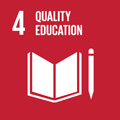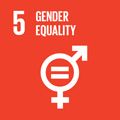- Docente: Francesco Privitera
- Credits: 10
- SSD: SPS/06
- Language: English
- Teaching Mode: Traditional lectures
- Campus: Forli
- Corso: First cycle degree programme (L) in International relations and diplomatic affairs (cod. 8048)
Learning outcomes
Aim of the course program is to analyse ECE and the Balkan political history since WWII to 1989/91 (generally speaking from the establishment of Communist Regimes up to their collapsing at the eve of the 1990s) . Methodologically, teaching style is following a chronological approach, whether in the introductory remarks some attention is devoted to some relevant theoretical issues like: modernisation and State building processes; cultural identity, national question and self-determination.
Course contents
Aim of the course program is at analysing East Central European and the Balkan political history since WWII to 1989/91 (generally speaking from the establishment of Communist Regimes up to their collapsing at the eve of the 1990s). Methodologically, teaching style is following a chronological approach, whether in the introductory remarks some attention is devoted to some relevant theoretical issues like: modernisation and State building processes; cultural identity, national question and self-determination.
The subject is tough in English.
The course is divided into to parts referring chronologically to the decades '40, '50, '60 (first part) and '70,'80, conclusions (second part).
Readings/Bibliography
Readings may change before the beginning of the course due to their availability at the "Ruffilli" Library.
Compulsory readings:Ivan T. Berend, Central and Eastern Europe 1944-1993. Detour from the Periphery to the Periphery, Cambridge UP, 1998 ; Second mid term exam: Robert Strayer, Why Did The Soviet Union Collapse? Understanding Historical Change, M.E.Sharpe, New York, 1998; Robin Okey,The Demise of Communist East Europe. 1989 in Context, Arnold, London, 2004; Final oral exam: Geoffrey Swain and Nigel Swain, Eastern Europe since 1945, St. Martin's Press, New York, 1998. Additional reading/reference: An Historical Atlas is highly suggested as a reference: Paul Robert Magocsi, Historical Atlas of East Central Europe, University of Washington Press, 1995 oppure su Gérard Chaliand.
Readings in addition to the Students who can not attend regular classes. Please select ONE of the following option : a) East Central Europe: Ladislav Holy, The Little Czech and the Great Czech Nation,Cambridge University Press, Cambridge, 1996. Betty Miller Unterberger, The United States, Revolutionary Russia and the Rise of Czechoslovakia, Texas A&M Univ. Press, College Station, 2000; Dennis Deletant, Romania under Communist Rule, The Center of Romanian Studies, Oxford, 1999. b) South East Europe: Florian Bieber and Carsten Wieland, Facing the Past, Facing the Future: Confronting Ethnicity and Conflict in Bosnia and Former Yugoslavia, Longo, Ravenna, 2005; Anna Krasteva ed., Communities and Identities in Bulgaria, Longo, Ravenna, 1998; Marco Dogo and Guido Franzinetti (eds.), Disrupting and Reshaping.Early Stages of Nation-Building in the Balkans, Longo, Ravenna, 2002; Luisa Chiodi (ed.), The Borders of the Polity. Migrations and Security Across the EU and the Balkans, Longo, Ravenna, 2005; Mient Ian Faber (ed.), The Balkans. A Religious Backyard of Europe, Longo Editore Ravenna, 1996. Stefano Bianchini, George Schöpflin (eds.),State Building in the Balkans. Dilemmas on the Eve of the 21st Century, Longo Editore, Ravenna, 1998. Dusan Janjic (ed.), Ethnic Conflicts and their Managements. The Case of Yugoslavia, Longo Editore, Ravenna. Further suggested readings: History and Politics Francois Frejto, Histoire des Democratie Populaires, Ed. du Sevil, 1952; Norman Neimark and Leonid Gibianskii (Eds.), The Establishment of Communist Regimes in Eastern Europe, 1944-1949, Westviev Press 1997; S.J. Ball, The Cold War. An International History 1947-1991, Arnold, 1998; Lannie P. Johnson, Enemies, Neighbours, Friends, Oxford UP, 1996; Ivan T. Berend, Central and Eastern Europe 1944-1993. Detour from the Periphery to the Periphery, Cambridge UP, 1998; Reneo Lukic & Allen Lynch; Europe from the Balkans to the Urals. The Disintegration of Yugoslavia and the Soviet Union, Oxford UP, 1996; R. Craig Nation, War in the Balkans 1991-2002, US Army War College, 2003; Dimitri Pentzopoulos, The Balkan Exchange of Minorities and its Impact on Greece, Hurst, London, 2002; Robert M. Hayden, Blueprints for a House Divided. The Constitutional Logic of the Yugoslav Conflicts, Michigan, 2000; Mark Biondich, Stjepan Radic, the Croat Peasant Party, and the Politics of Mass Mobilization, 1904-1928, UTP, 2000. Henry Huttenbach and Francesco Privitera (eds.), Self-Determination. From Versailles to Dayton. Its Historical Legacy, Longo, Ravenna, 1999. Post-Communism Geoffrey Pridham & Paul G. Lewis (Eds.), Stabilising Fragile Democracies, Routledge, 1996; Herbert Kitschelt, Zdeneka Mansfeldova, Radoslav Markowski, Gabor Toka, Post Communist Party System. Competition, Representation and Interparty co-operation, Cambridge UP, 1999; Tomas Kostelecky, Political Parties after Communism. Development in East-Central Europe, John's Hopkins UP, 2002; Jean Blondel and Ferdinand Mueller Rommel (Eds.),Cabinets in Eastern Europe, Palgrave, 2001; Marie Lavigne, The Economies of Transition. From Socialist Economy to Market Economy, St. Martins' Press, 1995/00; Ben Fowkes, The Post-Communist Era. Change and Continuity in Eastern Europe, MacMillan, 1999; Minton S. Goldmann, Revolution and Change in Central and Eastern Europe. Political, Economic and Social Challenges, Sharp, 1997; Michael D. Kennedy, Cultural Formations of Post-Communism. Emancipation, Transition, Nation, and War, University of Minnesota Press, 2002; Gill Jaeme,The Dynamics of Democratisation. Elites, Civil Society and the Transition Process, NY, St. Martins Press, 2000. Katherine Verdery, The Vanishing Hectare: Property and Value in Post-Socialist Transylvania, Cornell, UniPress, 2003; Jerald Creed, Domesticating Revolution from Socialist Reform to ambivalent Transition in a Bulgarian Village, Pennsylvania State UniPress, 1998; AA.VV., The Inflexibility Trap: Frustrated Societies,Weak States and Democracy, Centre for Liberal Strategies-Institute for Market Economics, Sofia, 2003.
Teaching methods
Frontal lectures with an active participation by the students.
Assessment methods
Assessment is based on two different tests, one for each module and a final oral exam.
Each test consists in a written examination based on the readings provided for each of the modules.
The fist test is based on a 3 questions/free answers. The second one is based on a specific topic referring to the second module. Each test will last 120 minutes.
In case, students could not attend one of the tests, they will be required to be assessed for the specific module at the oral exam. The same, in case of a possible failure of the test (less than 18/30).
In case of double failure or double missing of the test, the whole readings will be assessed during the oral exam.
Oral exam will consist in one/two questions regarding the final reading and a topic selected by the students among those in the syllabus. The oral exam's weight is about the 25% of the final evaluation, which includes the tests' evaluations too. Students can upgrade the tests average between two marks approximately.
In case of failure at the January/February sessions, students are not allowed to be assessed before September. Only one of the two sessions is available.
Teaching tools
Maps, photos, movies and music.
The Syllabus will be published during the fall semester.
Office hours
See the website of Francesco Privitera
SDGs


This teaching activity contributes to the achievement of the Sustainable Development Goals of the UN 2030 Agenda.
